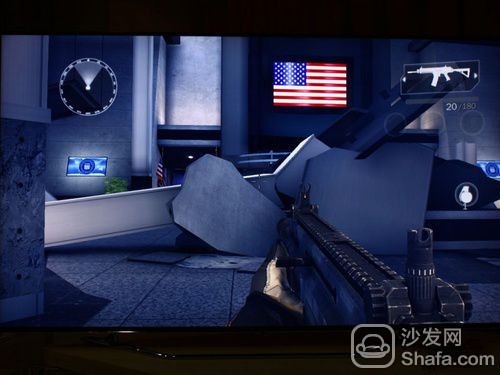Truth Investigation: The Mystery Behind the "Nuclear Warfare" of Smart TVs
TV "nuclear warfare" has been started in 2013, from dual-core to eight-core, and then to 200-core, and some brands have put middle-, high- and low-end products together with "multi-core" labels. But is this thing really useful to consumers? What exactly are the advantages shown or brought by the "nuclear war"? In the end there is no, today Wanwei appliances (microblogging) network to explore and explore with users.

Nowadays, in the circle of flat-panel TV counters in home appliance stores, quad-core, six-core or even 200-core TV products can be seen everywhere. First, Xiao Bian talks about how these numbers are calculated.
TV brands in the early days of the "nuclear war" only involved the CPU and GPU overlay, a dual-core CPU + dual-core GPU TV can be called "four-core TV"; same four-core CPU + 4-core GPU is "eight core TV". The emergence of VPU later helped Xiao Bian to increase his knowledge. This is a function similar to GPU and may play a role in TV picture quality. Next, Xiaobian first briefly introduced the meaning of the “three PUs†for everyone.
The CPU is called the central processor and can effectively increase the speed of the TV; the GPU is called a graphics processor and can enhance the rendering effect of the screen, especially when the dynamic screen is displayed. The VPU is called the Visual Processing Unit. This is the ATI. What the chip maker puts forward is no different from GPU.
・Analysis of TV "nuclear" status
TV brands promoting “nuclear power†are mostly made in China, mainly promoting quad-core, six-core and eight-core products. In the joint venture brand, we can hardly see the promotion concept of eight-core, ten-core, or even 200-core. Xiao Bian chose several typical TV products for comparison. After all, what impact does TV audit have on users' actual use? Let's take a look together.

First tell everyone about this TCL game TV, because of the main game features, so for TV entertainment performance requirements are higher, the most common dual-core A9 processor with quad-core SGX544, running a large game is no problem, while watching 4K video, All these basic functions can be realized by surfing the Internet.

TCL L55E5700-UD TV game screen
While playing games on this TV, you can feel that there are some stalls and tailings, but they can fully meet the needs of ordinary users. After all, there is no way to compare entertainment performance with tablets and computers.
Konka currently focuses on the introduction of eight-core and ten-core TV products. The promotional content is "faster and clearer." Compared with TCL game TVs, this Konka LED55X9800U really can respond faster, but six-core GPUs. There is no way for the rendering user of the image quality to distinguish directly through the naked eye, and it needs to be displayed through some external devices to play the game.

Konka LED55X9800U 4K screen
Compared with TCL game TV, Konka LED55X9800U does have a faster response speed, while watching 4K video, browsing the Internet, these basic functions can also be achieved.
The biggest feature of the Lenovo smart TV S9 is the NVIDIA Tegra K1 chip, equipped with 192 CUDA cores and four CPU cores, plus the TV's own four-core processor, which has 200 computing core smart TVs.

Lenovo smart TV S9 game main interface
Fuselage equipped with dual-core CPU + dual-core GPU, want other 196 nuclear (quadonic CPU + 192 nuclear GPU)? Thousands of blocks to buy an expansion card. Even if you do not want to buy it does not matter, comes with the quad-core configuration is also enough to see 4K blockbusters, Internet access, play games.
· Is multicore TV useful?
Generally speaking, we use 4K TV to look at large movies, browse web pages, or send microblogs. In fact, these functions can basically be implemented with "smart" TVs. Therefore, simply looking at the chip configuration is absolutely unnecessary. So is CPU, GPU or even VPU really useful for TV? Xiao Bian thinks that it can really enhance the performance of TV. However, the simple stack number seems to be a publicity gimmick.
Conclusion 1: The multi-core CPU can improve the overall television operating efficiency, mainly depends on whether the overall architecture of the chip including the CPU can achieve the effect; the GPU can effectively render the image quality and enhance the image processing capability. Big.
Conclusion 2: The number of simple reactors does not make any sense for televisions. It does not mean that televisions with higher numbers of auditors have stronger capabilities in response speed and quality rendering.
Conclusion 3: It is not necessary for users to entanglement TV audits because the main viewing and entertainment functions can be implemented on almost all smart TVs. Even if there is a gap, it will not affect users' use.
Recommended installation sofa butler Download: http://app.shafa.com/
